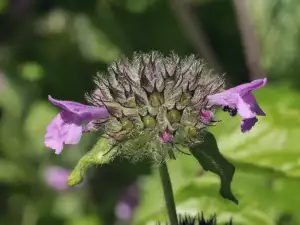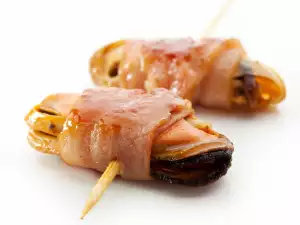Markery /Chenopodium bonus-henricus L./ is a perennial herb that grows around the grassy areas in the mountains. Can often be seen near the bushes in rough fields and pastures. It goes by the names Perennial Goosefoot, Lincolnshire Spinach or Markery.
It is distributed from 800 to 2000 m altitude. Available throughout Europe without some southwestern and southeastern parts.
Markery has a thick root, higher than 20 to 80 cm stem that is erect and simple. In rare cases, it is a pyramidal stem branched from the base. Leaves are consistent with large grass-green color. They have spear-sagittate to triangular shape. Markery colors are green and numerous, collected in clusters at the tips of stems. The fruit is a flattened nut and the seed is spherical and shiny. Markery blooms in May-August.
Composition of Markery
The roots of Markery contain glycosides, saponins, flavonoids, resins, mucilage. The saponin Henopodin is found in Markery. Flavonoids are about 10% of it. In the plant there are histamine, coffee and ferulic acid.
Collection and storage of Markery
The usable portion of the plant are its roots. They draw very early spring - March or months in the fall. After the seeds ripen in August-October, the roots are cleaned and washed.
Thicker piece are cut length wise. Dry in the shade. Properly dried roots should have a dark gray color, characteristic odor and astringent, insipid taste. Markery can be purchased from herbal shops.
Culinary use of Markery
The most famous use of Markery is to make delicious tahini halva. If you dare do it yourself, the recipe is as follows:

Ingredients: 2 kg sugar, 2 kg sesame tahini, 500 g glucose, 1 g of citric acid, 150 g of liquid Markery.
Preparation: To prepare liquid Markery, boil the roots for two and a half hours, then strain the broth. Mix sugar with water until a syrup, which is boiled until separating bubbles that burst. Mix the syrup with glucose and boil them, pour the boiling liquid Markery into another container now. Simmer mixture while placing a drop of it in cold water, it forms a ball that breaks. Then pour very slowly and with continuous stirring in a pan with tahini. The resulting mixture is packed into molds, covered with parchment paper and leave to cool.
Benefits of Markery
The herb has a very good expectorant and anti-inflammatory features. Mostly used for external use in skin lesions and boils. Markery has laxative and blood cleansing action.
Markery is used for hemorrhoids, constipation, syphilis, kidney stones. For internal use, boil 1 cup roots in 500 ml of water for about 10 minutes. Strain and drink the resulting potion at 50 ml three times daily before meals. This potion is very useful for people suffering from hemorrhoids. You can use the liquid for external use. For this reason after strain and cooling it, you should apply a sterile gauze pad or cotton swab to the desired location.
Against constipation prepare cold extract 2 tablespoons Markery, doused with 250 g cold water. Leave to stand for 4 hours. Drink the morning on an empty stomach. According to the resulting effect, it is taken as many times as necessary to normalize digestion. You can drink as a normal herbal tea, slightly sweetened with honey.
















Comments